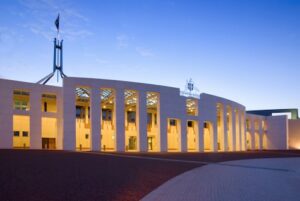Following the release of the government’s latest Intergeneration Report there is renewed confidence that more people will see SMSFs as a more attractive option as a savings vehicle for retirement.

The number of people using SMSFs will certainly grow over the next two decades as the government continues to view superannuation as an infrastructure bank, says the head of an international investment platform.
Adam Smith, CEO of Saxo Australia, said following the release of the government’s latest Intergeneration Report last week he is confident more people will see SMSFs as a more attractive option as a savings vehicle for retirement.
“What was present with the Intergenerational Report was that superannuation is going to be part of a nation-building initiative, which is a monologue the government has had going for a while now,” he told SMSF Adviser.
“In experience with our own clients, this is scaring a lot of people.
“Ultimately, if you go back 30 years when compulsory superannuation was established, its purpose was for people to save for themselves and invest in their own retirement.
“The early garnishing of wages was to support a better life after you stopped working.
“The government now, to my way of thinking, has decided that the trillions of dollars now invested in superannuation is a wonderful pool of savings that should be made available to use as it sees fit, which was not the reason superannuation was established.
“Where there is a lack of policy decision or communication around these things makes people scared and I think many will now see SMSF as a more attractive way to save for retirement.”
The attraction of an SMSF, he said, is that people have control of their savings, and are not at risk of having their retirement savings diverted to an initiative that they may not support such as defence, housing, or health.
“Ultimately it is your money,” he said.
“It is an interesting point we are at, and I believe the government should have taken these sorts of decisions [around superannuation] to an election.”
He said the pending legislation around the $3 million super tax is also a disincentive for people to put money into their retirement savings.
“People are being penalised for doing the right thing. The other thing is that compulsory super, now at 11 per cent going to 12 per cent, will see more people get to that $3 million mark,” he said.
“The tailwinds for that kind of super balance, especially in SMSF land, are well and truly evident and pushing people towards that cap.
“The government seems to be running a lot of ideas up the flagpole to see what kind of appetite the public has for them and is busy pushing towards the disassembling of the superannuation system.”
He said establishing an SMSF now is easier than ever, especially with the number of technology platforms available.
“Providers like us offer capabilities to manage your own super decisions. There is a lot of choice and people can make those choices with confidence,” he said.
“The beauty of an SMSF account is that you don’t have to be putting everything in one basket.
“But people do need to be educated [about investment]. A good test about an investment decision is asking yourself how much you know about the business you may want to invest in.
“The big role for Saxo and other providers is to educate. For a long time, Australians had a home investing bias, but that is starting to change.
“Investment opportunities overseas are huge, and investors are now getting access to international markets. Australia has become an exporter of investment capital, but we need to educate people about the opportunities out there.
“The younger generation gets it and can see the global investment landscape and see opportunities.
“People should invest in companies they understand. The beauty of an SMSF is that people are interested in doing their own research and they can express that in an SMSF as long as they are not putting everything on risky products.
“Literally, the world is your oyster. An SMSF is now much simpler and more cost-effective, and you just have to be prepared to invest some time and effort into it, but it is your money and you should be interested in where it should be invested and take a more active part in reaching your retirement goals.”
By Keeli Cambourne
30 August 2023
SMSFadviser.com


